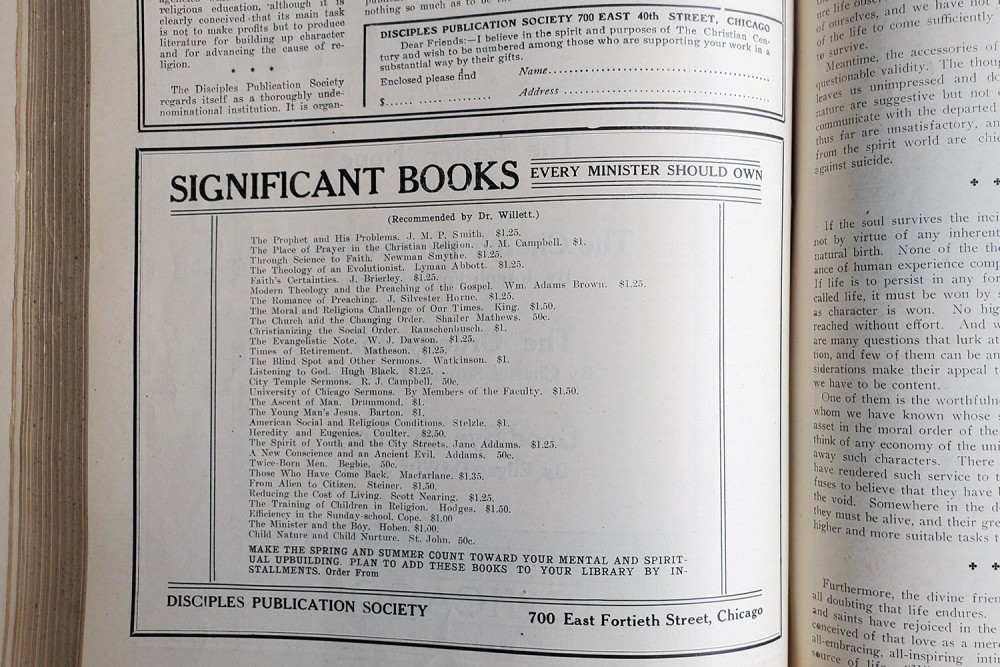The racist scientism of our past
The Century, like the Smithsonian, once supported eugenics.

(Century photo)
Last year, two Washington Post reporters began an investigation into the Smithsonian National Museum of Natural History’s collection of human remains. The collection includes 255 brains, some with records of people’s race—most of them Black. Beginning in 1903, the brains were taken, often without consent, to form what Ales Hrdlicka called his “racial brain collection.” The anthropologist sought anatomical evidence that White people are superior. This belief that racial superiority could be confirmed by science—part of a larger eugenics movement—was widespread in the late 19th century and persisted well into the 20th.
Our Century forebears had some sympathies with the eugenics movement. Religion scholar Beth Stroud recently contacted us after she noticed some ads the magazine published in 1916. In one, the Disciples Publication Society offered a list of 30 “significant books every minister should own” that included Heredity and Eugenics, which culminates with an essay by Charles Davenport, a leading proponent of eugenics. That sent us digging into our archives to see what else we could find.
The editors’ interest in eugenics seems to have come primarily in the 1910s, when eugenics bills were being debated in state capitols. “Are eugenic laws constitutional?” asks one editorial (Feb. 26, 1914). “We hope they are. They ought to be.” The bills in question included provisions requiring certificates of health before marriage as well as forced sterilizations. “The discussion of eugenics, race betterment and marriage regulation is productive of a large amount of good,” says the editorial.


